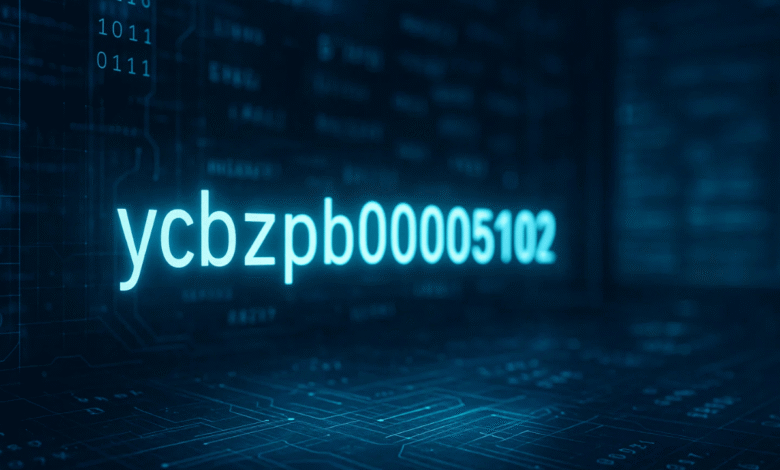ycbzpb00005102 – Understanding the Mystery Behind Random Online Codes

In the digital age, we often come across strange codes or combinations of letters and numbers like ycbzpb00005102 scattered across websites, online platforms, or even within product listings. These codes may seem meaningless at first glance, but they serve various purposes ranging from product identification to tracking and indexing. This article dives deep into the origins, uses, and possible meanings behind ycbzpb00005102, helping readers understand why such codes appear and how they fit into the broader online ecosystem.
While researching ycbzpb00005102, there wasn’t much direct information available. However, that opens up an interesting opportunity to explore why codes like these exist, what they could represent, and how to interpret them when you encounter something similar online.
What is ycbzpb00005102 and Why It Catches Attention
The code ycbzpb00005102 is an example of a randomly generated alphanumeric identifier that shows up on various low-content or data-heavy web pages. Such identifiers are often created automatically by software systems, databases, or online tracking mechanisms to label data items uniquely.
In many cases, identifiers like ycbzpb00005102 are part of digital footprints. They could belong to anything from an inventory item, an internal project tag, or even a placeholder used during database testing. Some sites display such codes because of indexing errors or unfiltered database entries.
When users find ycbzpb00005102 in search results, it raises curiosity since it doesn’t connect directly to a brand, product, or service. This very uncertainty makes it an intriguing case study in how information flows on the internet.
Common Reasons Why Codes Like ycbzpb00005102 Exist
To understand the presence of ycbzpb00005102 online, it’s helpful to look at the general reasons why alphanumeric codes are generated. These codes serve many purposes across industries and systems:
- Database Identification: Databases assign unique IDs like ycbzpb00005102 to distinguish records.
- Tracking and Labeling: Companies often use similar strings for logistics and tracking shipments.
- Spam or Automated Entries: Some random codes appear on websites as part of spam data or placeholder content.
- Security Tokens: Unique codes can serve as access keys or tokens in secure systems.
- Search Index Artifacts: Search engines sometimes capture and display database fragments containing identifiers.
Understanding these points provides context to why ycbzpb00005102 might appear online without any visible explanation.
The Connection Between Random Codes and Data Management
In modern data management, every piece of digital information often carries a unique label. This helps systems organize massive datasets efficiently. Codes like ycbzpb00005102 may not hold visible meaning to human users, but they are extremely valuable in technical systems that rely on identifiers for categorization.
For example, e-commerce sites might generate product IDs resembling ycbzpb00005102 to differentiate items in their inventory. Similarly, content management systems use random codes to track posts, images, or datasets. Even though these identifiers seem meaningless, they maintain order behind the scenes.
The appearance of ycbzpb00005102 could also suggest an unfiltered or public display of such internal identifiers. This happens when websites unintentionally expose database entries or incomplete content to search engines.
How to Verify the Meaning of Unknown Codes Like ycbzpb00005102
When you stumble upon something like ycbzpb00005102, you might want to know whether it’s legitimate or not. There are a few practical steps to take when analyzing random identifiers found online:
- Search Contextually: Look for pages or text surrounding the code to see if there’s any connection to a product or service.
- Check Multiple Search Engines: Sometimes different platforms display different results for the same code.
- Avoid Clicking Suspicious Links: Codes appearing only on random or poorly structured sites could be connected to spam or malicious activity.
- Use Reverse Lookup Tools: Certain platforms allow code or number lookups to trace products or sources.
- Evaluate Credibility: Always consider whether the site displaying ycbzpb00005102 looks trustworthy.
These checks can help you assess whether a code is part of a valid system or just digital noise.
The Role of Random Codes in Online Spam and SEO Manipulation
One interesting reason why codes like ycbzpb00005102 appear online involves SEO manipulation or automated spam content. Some low-quality websites use random strings to create unique pages that trick search engines into indexing them as fresh content.
In this context, ycbzpb00005102 could simply be a placeholder or keyword stuffing attempt without any true meaning. Such practices are often used by spam networks to inflate traffic or mislead web crawlers. Recognizing these patterns can help internet users distinguish between authentic content and manipulated data.
It’s also worth noting that in the world of automated content generation, strings like ycbzpb00005102 serve as filler text to simulate organic-looking pages. While these pages rarely contain value, they provide insight into how digital manipulation works in modern SEO environments.
Broader Implications of Identifiers Like ycbzpb00005102
From a technical standpoint, identifiers such as ycbzpb00005102 are essential to maintaining data structure and uniqueness across systems. Every product, file, and transaction in the digital world must have a distinctive identity. These identifiers help prevent duplication, ensure traceability, and simplify auditing.
However, when such codes leak into the public domain without context, they create confusion. For instance, a user may see ycbzpb00005102 and assume it’s a product number, but in reality, it could be an internal data artifact or part of test content.
This phenomenon highlights how deeply interconnected our digital systems have become and how traces of backend data occasionally surface unintentionally.
Conclusion
The mysterious code ycbzpb00005102 represents more than just a random mix of letters and numbers. It symbolizes the hidden framework behind digital organization, automation, and sometimes, online clutter. While its specific origin remains unclear, it sheds light on how data is created, tracked, and occasionally misplaced across the internet.
Whether ycbzpb00005102 is a product ID, a placeholder, or a piece of spam, it serves as a reminder that every piece of online content has a digital footprint. The next time you encounter an unfamiliar code, remember that it could be part of a vast system that quietly powers much of the web’s structure and functionality.
Frequently Asked Questions
Q1. What is ycbzpb00005102?
ycbzpb00005102 is a random alphanumeric identifier that appears on various online pages, likely as a database code or automated placeholder.
Q2. Is ycbzpb00005102 linked to any specific product or service?
There’s no direct evidence linking ycbzpb00005102 to a product or service; it seems to be an automatically generated identifier.
Q3. Why do random codes like ycbzpb00005102 appear in search results?
These codes appear due to database exposure, SEO manipulation, or the accidental indexing of internal data.
Q4. How can I check if ycbzpb00005102 is legitimate?
You can verify its authenticity by checking the credibility of the sites displaying it and ensuring the context makes sense.
Q5. What can we learn from codes like ycbzpb00005102?
They highlight how digital systems organize data and how backend information occasionally becomes visible online, revealing the hidden layers of the web.




